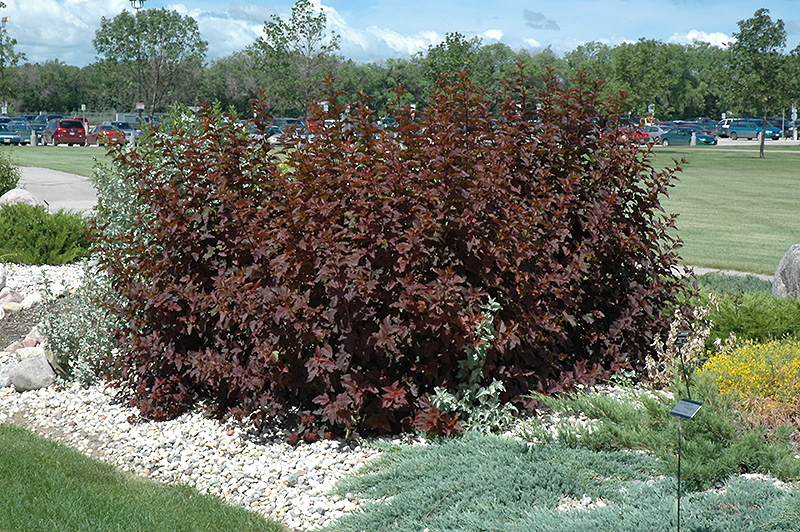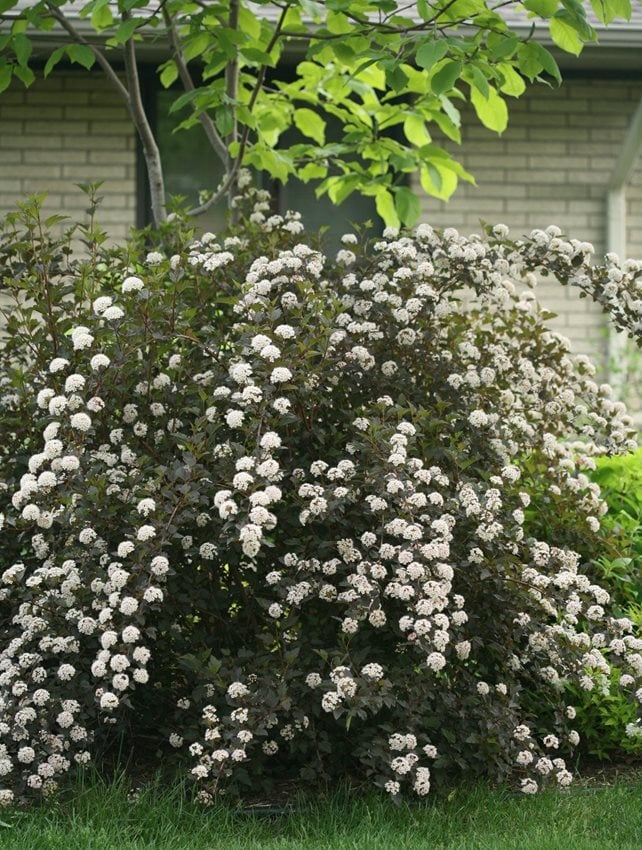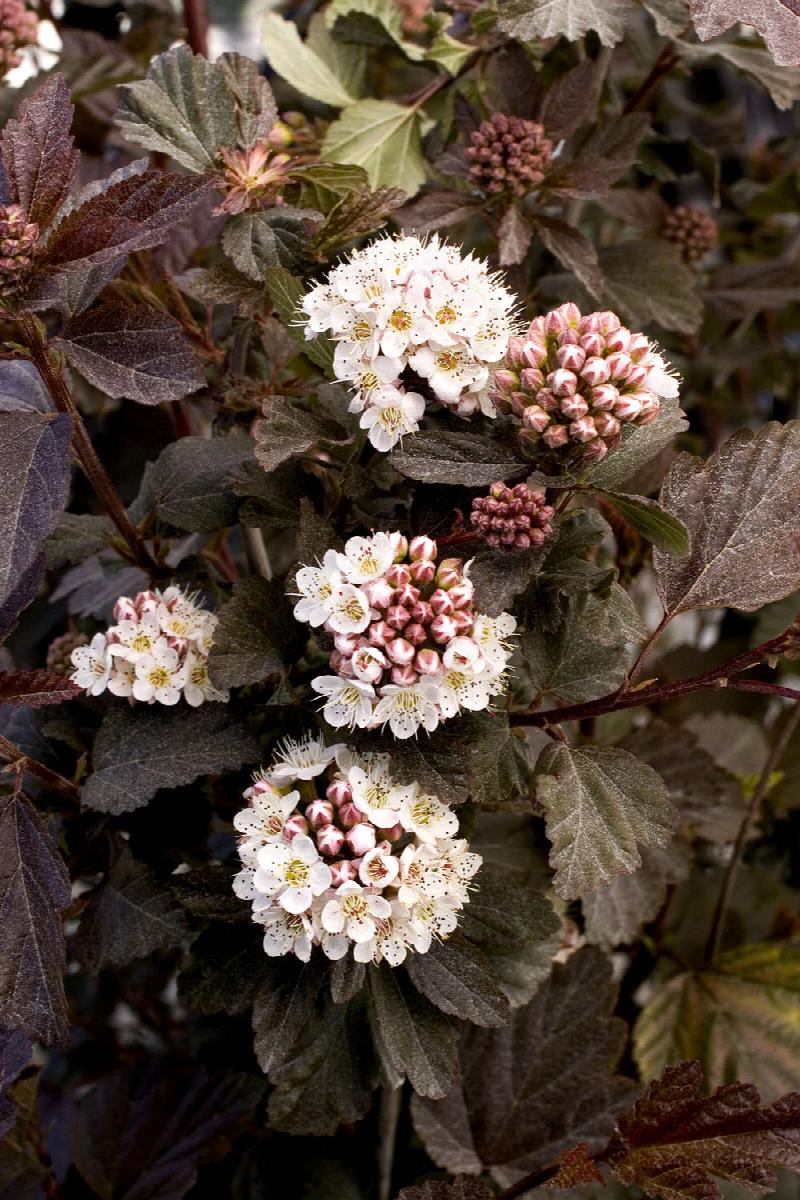How To Grow Care For Diabolo Ninebark
Title: How to Grow and Care for Diablo Ninebark
Introduction:
Diabolo Ninebark is a beautiful and versatile shrub that can add a touch of elegance to any garden. It is known for its striking red-purple foliage and its clusters of white flowers that bloom in the spring. Diablo Ninebark is relatively easy to grow and care for, making it a great choice for even the most novice gardener.
In this blog post, we will discuss the ideal growing conditions for Diablo Ninebark, how to plant and care for it, and how to propagate it. We will also provide some tips on how to prevent pests and diseases.
Main Content:
Growing Conditions
Diabolo Ninebark prefers full sun to partial shade. It can tolerate some afternoon shade in hot climates, but it will not flower as well if it does not get enough sunlight. Diablo Ninebark is also not as cold-hardy as some other types of ninebark, so it is best to plant it in USDA hardiness zones 4 to 8.
Diabolo Ninebark prefers well-drained soil that is rich in organic matter. It can tolerate a wide range of soil pH levels, but it prefers slightly acidic soil. If you are planting Diablo Ninebark in clay soil, you may need to add some sand or compost to improve drainage.
Planting and Care
Diabolo Ninebark can be planted in the spring or fall. When planting, dig a hole that is twice as wide and deep as the root ball of the plant. Amend the soil in the hole with some compost or other organic matter. Place the plant in the hole and backfill with soil, tamping it down gently. Water the plant well after planting.
Diabolo Ninebark is relatively drought-tolerant once it is established, but it will benefit from regular watering during the first year after planting. Water the plant deeply once a week, or more often if the weather is hot and dry.
Fertilize Diablo Ninebark in the spring with a balanced fertilizer. You can use a slow-release fertilizer or a liquid fertilizer. Follow the directions on the fertilizer label.
Pruning
Diabolo Ninebark does not require a lot of pruning. You can prune it in the spring to remove any dead, damaged, or diseased branches. You can also prune it to shape it or to keep it from getting too large. If you want to encourage more flowers, you can prune Diablo Ninebark in the fall after it has finished flowering.
Propagation
Diabolo Ninebark can be propagated by rooting cuttings. Take cuttings in the spring or summer from healthy, non-flowering branches. The cuttings should be about 4 inches long and have at least two nodes. Dip the cuttings in rooting hormone and plant them in a well-draining potting mix. Keep the potting mix moist and place the cuttings in a warm, shady location. The cuttings should root in about four weeks.
Pests and Diseases
Diabolo Ninebark is relatively resistant to pests and diseases. However, it can be susceptible to aphids, scale, and powdery mildew. If you see any pests or diseases on your plant, treat them immediately with an appropriate pesticide or fungicide.
Conclusion
Diabolo Ninebark is a beautiful and versatile shrub that is easy to grow and care for. It can add a touch of elegance to any garden. If you are looking for a new shrub to add to your landscape, Diablo Ninebark is a great option.
If you are looking for a beautiful and versatile shrub for your garden, consider the Diablo Ninebark (Physocarpus opulifolius 'Diabolo'). It is a multi-stemmed deciduous shrub with an upright spreading habit of growth. The leaves are dark maroon in color, turning to a deep scarlet in the fall. The flowers are white and appear in clusters in late spring. Diablo Ninebark is hardy in zones 3-8 and is relatively low-maintenance. It is drought-tolerant and deer-resistant.
To learn more about Diablo Ninebark, visit Home Gardening. You can find information on planting, care, and propagation. You can also see photos of the shrub in different stages of growth.
FAQ of diabolo ninebark
- What is diabolo ninebark?
Diabolo ninebark is a deciduous shrub that is native to North America. It is known for its bright red foliage, which turns orange and yellow in the fall. Diabolo ninebark can grow up to 6 feet tall and wide, and it is tolerant of a variety of soil conditions. It is a relatively low-maintenance shrub that is deer-resistant and drought-tolerant.
- Where can I plant diabolo ninebark?
Diabolo ninebark can be planted in full sun to partial shade. It prefers moist, well-drained soil, but it can tolerate some drought. It is a hardy shrub that can withstand temperatures as low as -20 degrees Fahrenheit.
- How do I care for diabolo ninebark?
Diabolo ninebark is a relatively low-maintenance shrub. It requires regular watering, especially during the first year after planting. It should be fertilized in the spring with an all-purpose fertilizer. Diabolo ninebark does not need to be pruned often, but it can be pruned in the spring to remove any dead or damaged branches.
- What are some pests and diseases that affect diabolo ninebark?
Diabolo ninebark is generally resistant to pests and diseases. However, it can be susceptible to aphids, spider mites, and scale insects. These pests can be controlled with insecticidal soap or neem oil. Diabolo ninebark can also be susceptible to powdery mildew. This disease can be prevented by planting diabolo ninebark in a location with good air circulation and by watering it at the base of the plant.
- How can I propagate diabolo ninebark?
Diabolo ninebark can be propagated by softwood cuttings in the spring or summer. Take 4-6 inch cuttings from healthy, new growth. Remove the bottom leaves from the cuttings and dip them in rooting hormone. Plant the cuttings in a well-draining potting mix and keep them moist. The cuttings should root in 4-6 weeks.
Image of diabolo ninebark
- Image 1: A close-up of the dark purple leaves of a diabolo ninebark shrub.
- Image 2: A full-size view of a diabolo ninebark shrub in flower. The flowers are white and pink.

- Image 3: A diabolo ninebark shrub in fall foliage. The leaves are a mix of red, orange, and yellow.

- Image 4: A row of diabolo ninebark shrubs planted in a garden. The shrubs are all about the same height and have a uniform shape.

- Image 5: A diabolo ninebark shrub in a container on a patio. The shrub is surrounded by other plants, including some annuals.
- Image 6: A diabolo ninebark shrub as a background plant in a flower bed. The shrub is taller than the other plants in the bed and provides a backdrop for the flowers.

- Image 7: A diabolo ninebark shrub as a privacy screen. The shrub is planted in a row and forms a solid barrier between two areas of the garden.

- Image 8: A diabolo ninebark shrub as a windbreak. The shrub is planted in a windy area and helps to protect other plants from the wind.

- Image 9: A diabolo ninebark shrub as a specimen plant. The shrub is planted in a prominent location in the garden and is the focal point of the area.
- Image 10: A diabolo ninebark shrub in a woodland garden. The shrub's dark purple leaves provide a contrast to the green leaves of the other plants in the garden.

Post a Comment for "How To Grow Care For Diabolo Ninebark"